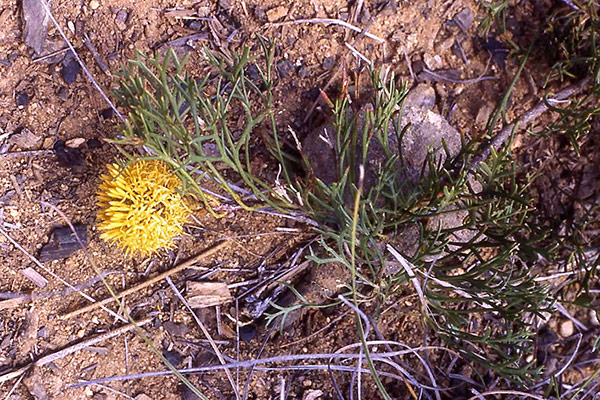General Description:
Isopogon is a genus of around 35 species, all occurring only in Australia. They are found in the southern half of the continent in temperate regions. Most are small to medium sized shrubs having flower clusters arranged in globular heads. The fruits are also globular in shape giving rise to the common name of “drumsticks”. Some are also called “coneflowers” although this name is more usual in the related genus Petrophile.
Isopogon prostratus is a prostrate shrub of a few branches which may spread to about 0.5 to 1 metre. It was formerly regarded as a variety of the better-known I.anemonifolius, which it resembles in both flower and foliage. The leaves may be up to 100mm long and are divided into many linear segments. The yellow flowers occur in late spring and early summer, conspicuously displayed on the ends of the branches. The flower clusters are around 35 mm in diameter and are followed by the spherical (barrel-shaped) seed pods which remain on the plant for an indefinite period.
This is an attractive species which would make a very desirable plant for gardens. It has not received wide cultivation to date and results have been mixed. Because of its wide geographical range, some selection is probably required to achieve reliability. It would probably perform best in a well drained position in full sun or light shade. The species develops a lignotuber and will therefore tolerate pruning but this should not be unnecessary.
Propagation from seed or cuttings is relatively easy.

Isopogon prostratus
Photo: Brian Walters
 Australian Native Plants Society (Australia)
Australian Native Plants Society (Australia)